THE CHLADNI PROJECT
Ernst Florens Friedrich Chladni (30 November 1756 - 3 April 1827) was a German physicist and musician. His most important work, for which he is sometimes labeled the father of acoustics, included research on vibrating plates and the calculation of the speed of sound for different gases. He also undertook pioneering work in the study of meteorites.
One of Chladni's best-known achievements was inventing a technique to show the various modes of vibration of a rigid surface. When resonating, a membrane is divided into regions that vibrate in opposite directions, bounded by lines where no vibration occurs (nodal lines). Chladni repeated the pioneering experiments of Robert Hooke who, on July 8, 1680, had observed the nodal patterns associated with the vibrations of glass plates. Hooke ran a violin bow along the edge of a plate covered with flour and saw the nodal patterns emerge.
Chladni was even able to produce a formula that successfully predicted the patterns found on vibrating circular plates. The success of Chladni's research, combined with the popularity of his many public demonstrations, did much to improve the standing of acoustics during his lifetime, and inspired many of the acoustic researchers who later extended his work.
In 2013 the two Berlin percussionists Burkhard Beins and Michael Vorfeld got invited by the
Avant Avantgarde Festival to develop and present an installational concert piece in two of the four cities in which the festival took place, Krakau and Berlin. Both of them are renowned experts of the bowed cymbal, but they nevertheless decided during their work process to use sine wave generators and transducers instead to excite several metal plates of different size. They also found out that salt actually worked best to make the nodal patterns visible.
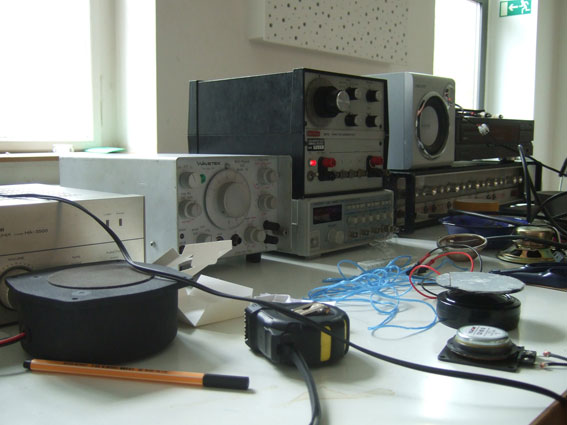 |
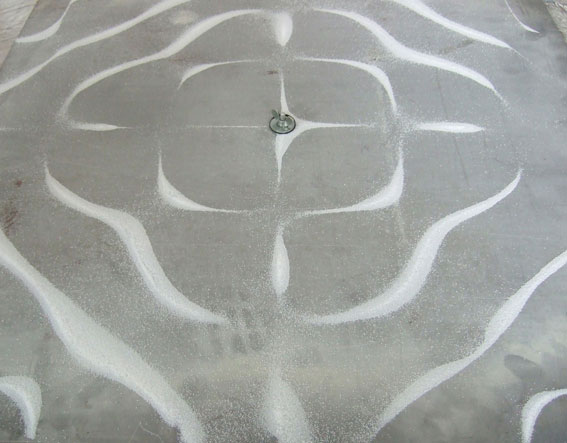 |
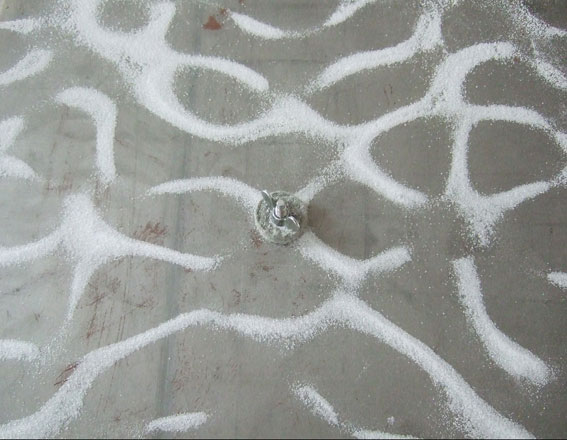 |
|||
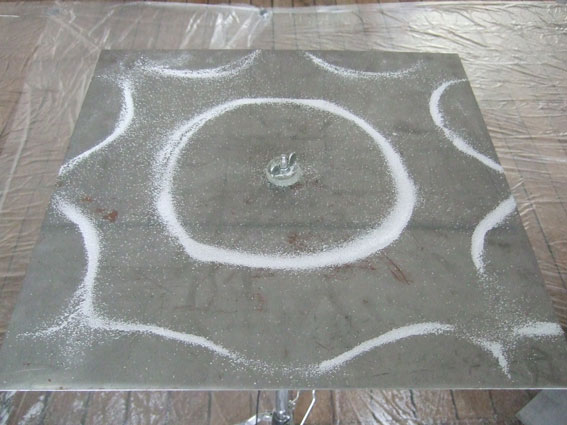 |
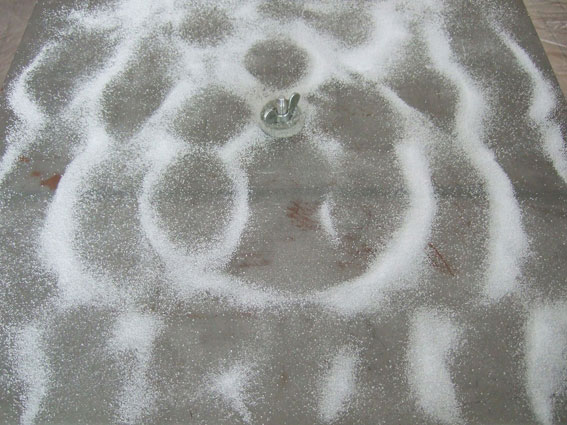 |
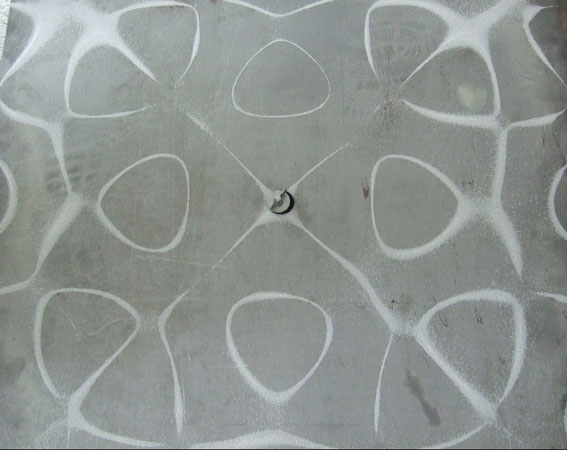 |
|||
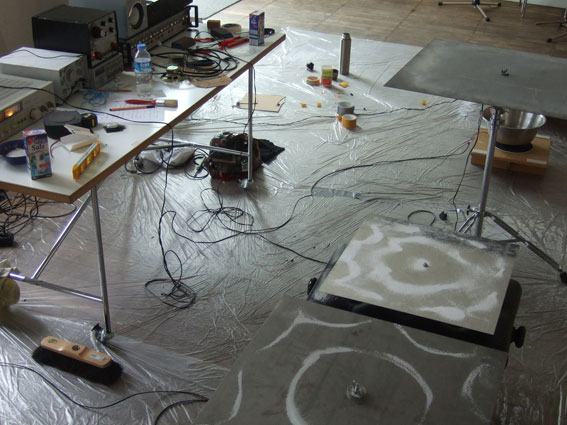 |
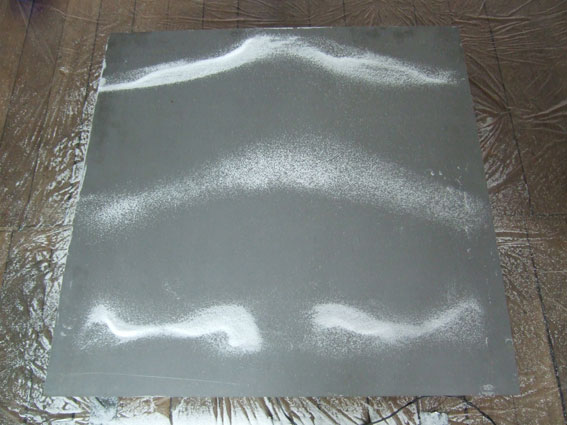 |
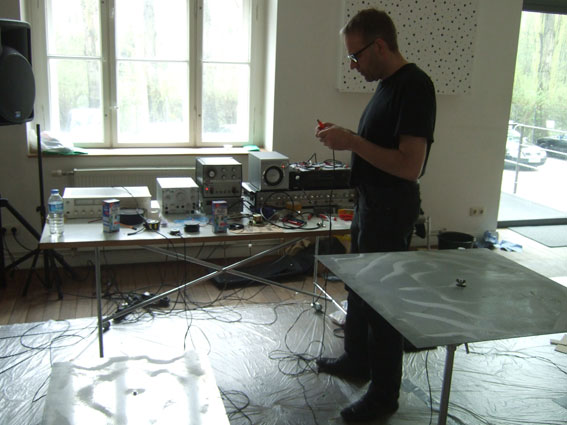 |
|||
| all photos: vorfeld |